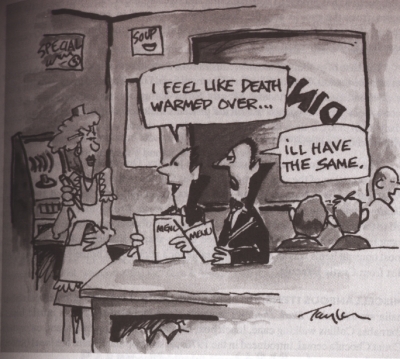Abracadabra: Language, Memory, Representation
Blood and Death.
Blood
The most striking aspect of these chapters is of course Lucy's struggle for life as Dracula repeatedly attacks her. We know only that Lucy has two puncture marks on her neck and is as pale as the sheet she sleeps on.
Two Doctors treat Lucy. One is Seward, our fully modern doctor-hero, a psychiatrist, a modern city dweller and a skeptic. The other is Van Helsing, older (Seward's Mentor), from Holland, and representing 19th century traditional medicine, and a strange, perhaps suspicious knowledge of the occult.
Over the course of the chapters, four men give lucy blood.
One of the first doctors in England to promote blood transfusion was James Blundell (who's Gravitor is pictured here). Blundell advocated transfusion for haemorrhaging patients (in particular, women), but it continued a long tradition of blood letting and phlebotomy whose uses and meanings vary in time and place
Blundell studied in Edinburgh about the time of Mary Shelley's Frankenstein and John Polidori's The Vampyre. Blundell was a Romantic scientist, obsessed with the glory of knowledge and with adventurous stories of medical and scientific heroism (from saving patients to colonizing continents).
Death
Apparent Death vs. Real Death.
How do we recognize when someone is really dead? Not just mostly dead. Premature burial, transfusion, electricty and recuscitation, coma, brain death. All of these things conspire to make death non-obvious.
And then there is sleep: When Lucy dies, she is more lively than ever. Even the coroner agrees that she is a beautiful corpse, a testament to his profession.
Blundell, like many others, was obsessed with techniques for re-animation. This included not only blood, but electricty as well, as made famous in Frankenstein. Blundell's various devices were intended to keep the blood moving, since the main difficult of the 19th century transfusions was not blood type (a 20th century understanding) but the problem of coagulation (Recall that Van Helsing claims that Arthur's blood does not need to be defibrinated).
An early example of the meaning of blood and sex.
THE FLEA.
by John Donne
MARK but this flea, and mark in this,
How little that which thou deniest me is ;
It suck'd me first, and now sucks thee,
And in this flea our two bloods mingled be.
Thou know'st that this cannot be said
A sin, nor shame, nor loss of maidenhead ;
Yet this enjoys before it woo,
And pamper'd swells with one blood made of two ;
And this, alas ! is more than we would do.
O stay, three lives in one flea spare,
Where we almost, yea, more than married are.
This flea is you and I, and this
Our marriage bed, and marriage temple is.
Though parents grudge, and you, we're met,
And cloister'd in these living walls of jet.
Though use make you apt to kill me,
Let not to that self-murder added be,
And sacrilege, three sins in killing three.
Cruel and sudden, hast thou since
Purpled thy nail in blood of innocence?
Wherein could this flea guilty be,
Except in that drop which it suck'd from thee?
Yet thou triumph'st, and say'st that thou
Find'st not thyself nor me the weaker now.
'Tis true ; then learn how false fears be ;
Just so much honour, when thou yield'st to me,
Will waste, as this flea's death took life from thee.

James Blundell's Gravitator for the transfusion of blood. Reproduced from Kim Pelis "Transfusion, with Teeth" in Manifesting Bodies ed. Robert Bud. 1999. Harwood Publishers.
